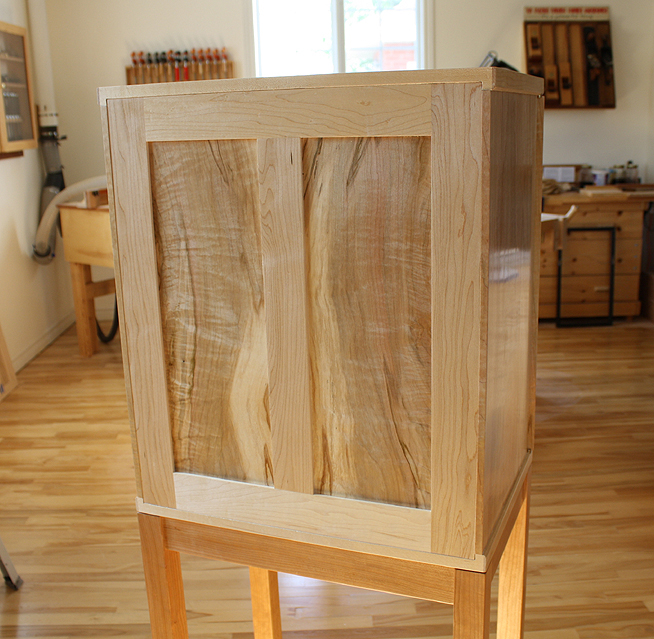A portion of my cabinet design and build process involves the creation of a cabinet back. Conventional wisdom says the back of a cabinet is not nearly as important as the front or sides, so it merely needs a panel which is rabbeted into the sides, top and bottom. The problem with this thought process is the assumption that the back of the cabinet will be placed against a surface or wall and not seen. This doesn’t apply to all cabinets as many cabinets are designed as showcase cabinets and placed away from walls; sometimes placed in the center of a room or even a foot or two away from a wall. Something also feels wrong about diminishing the importance of the back of a cabinet when so much emphasis is placed on the design and structure of the front and sides of the cabinet. With this in mind, the need for a more aesthetically pleasing cabinet back becomes important, along with the function that it introduces to the cabinet. An example of function is a wall-mounted cabinet that needs a structurally strong back.

The resulting back panel which best meets the criteria of both aesthetics and function is the frame and panel back; a panel inset into a surrounding frame composed of rails and stiles. The frame and panel back is inset into the cabinet back much like a conventional panel would but it also provides some rigidity to the cabinet. In the situations where a single panel is too wide, a middle stile is installed to divide the frame into two halves; otherwise for smaller cabinets a single panel is sufficient. The panel itself can either complement or contrast the cabinet, providing an interesting focal point once the doors of the cabinet are opened, as well as drawing the eye to the pleasing back of the cabinet.
